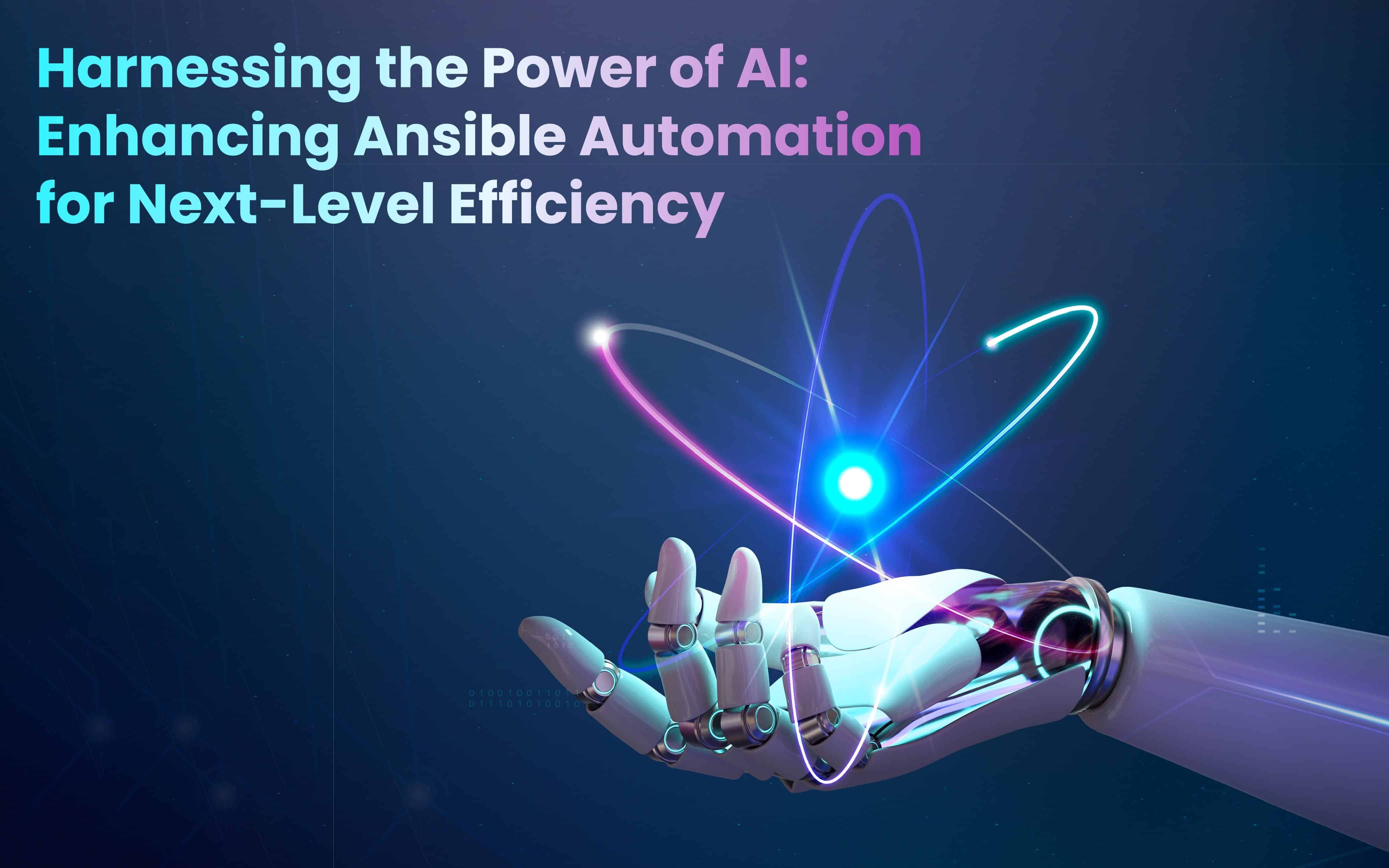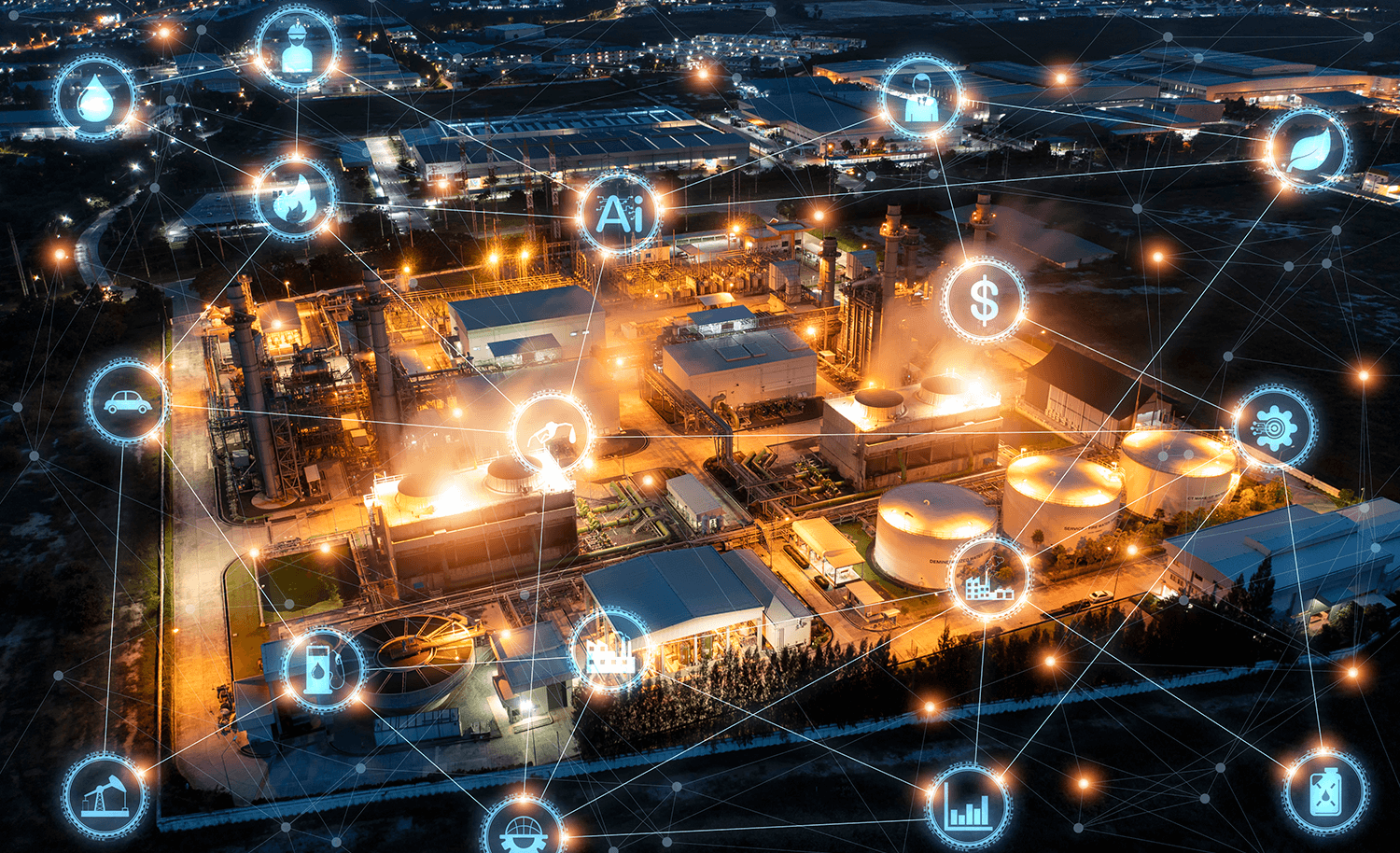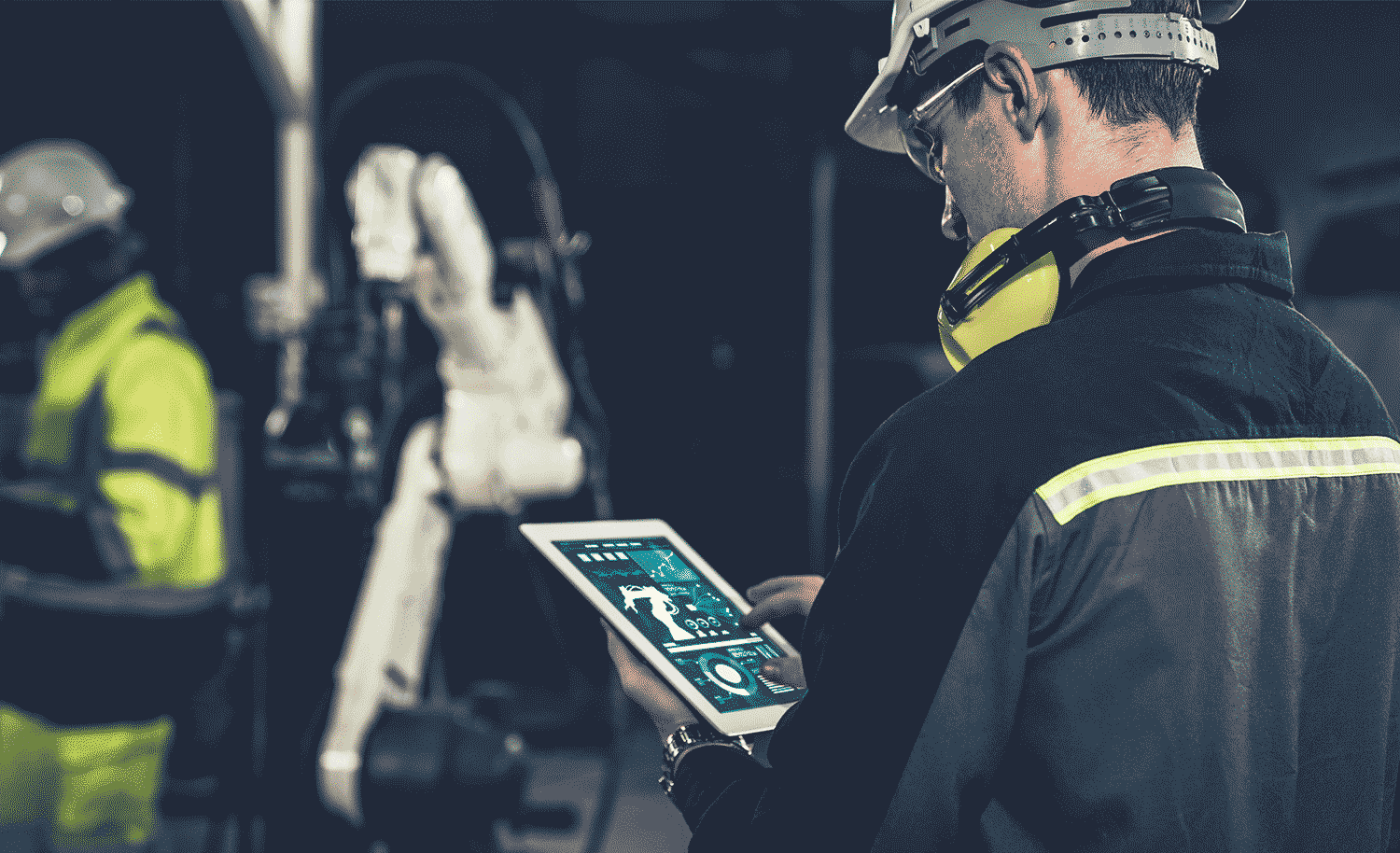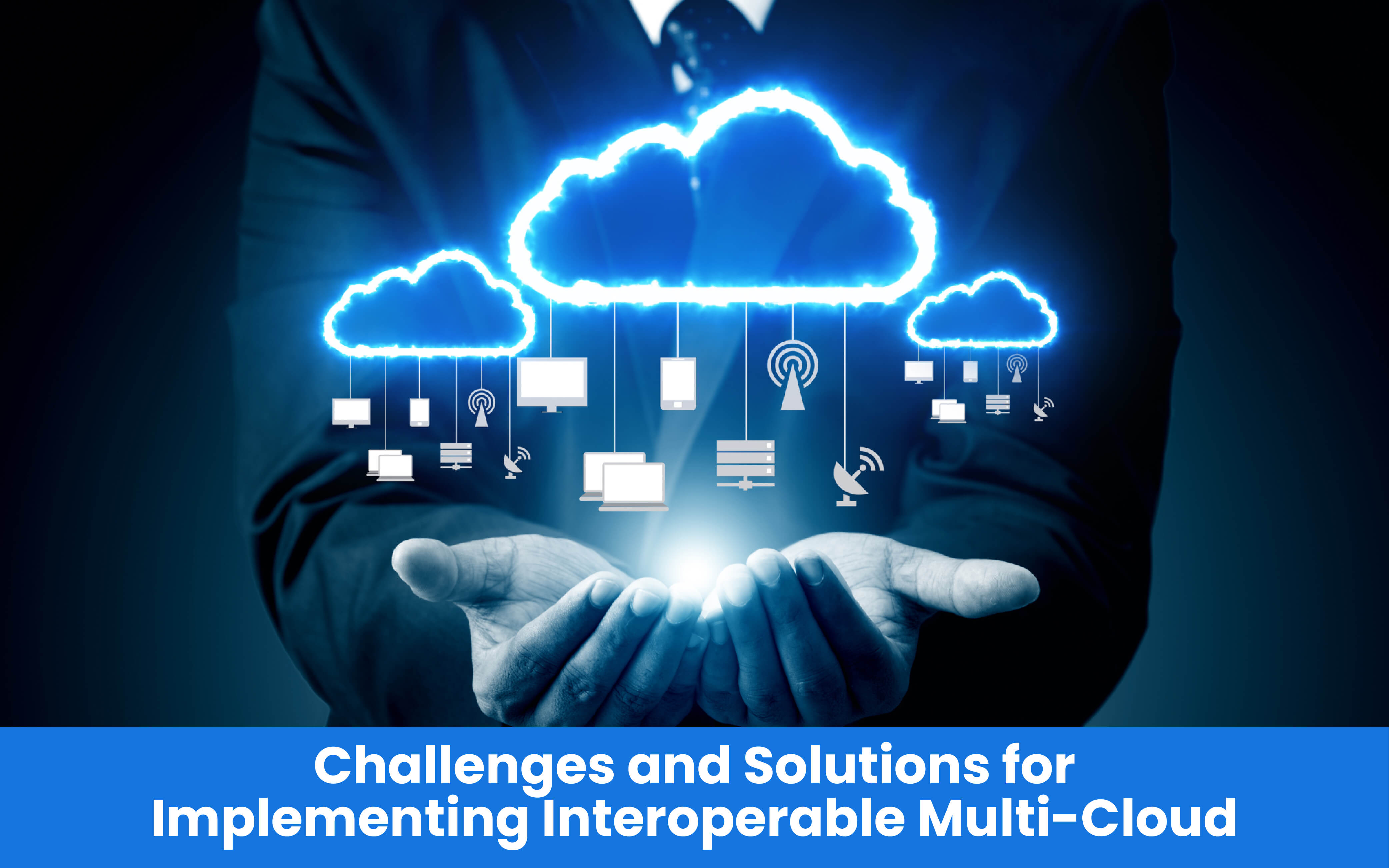Blogs
To know about all things Digitisation and Innovation read our blogs here.
Automation
Harnessing the Power of AI: Enhancing Ansible Automation for Next-Level Efficiency
SID Global Solutions
13 June 2023

Introduction
The integration of Artificial Intelligence (AI) technologies into automation workflows has transformed the way organizations streamline their operations. Ansible, a powerful IT automation tool, can be supercharged with AI to achieve next-level efficiency and performance. This comprehensive guide explores how AI can enhance Ansible automation, enabling organizations to optimize resource allocation, improve decision-making, and unlock new levels of productivity. From leveraging machine learning algorithms to deploying predictive analytics, we will delve into the key techniques and strategies for harnessing the power of AI in conjunction with Ansible.
Also Read: The Power Duo: Why SRE and DevOps Are Essential for Modern Platform Engineering?
I. What is Ansible Automation?
Ansible is a powerful automation tool that simplifies and accelerates IT operations. It is designed to be declarative and agentless, making it easy to use and deploy across various systems and environments. With Ansible, users can define the desired state of their infrastructure or applications through simple and human-readable code. Ansible stands out for its simplicity and efficiency in automating IT processes. It follows a declarative approach, meaning users define the desired end state of their systems, and Ansible takes care of executing the necessary tasks to achieve that state. This eliminates the need for complex procedural scripting.
Additionally, Ansible is agentless, which means it does not require any software to be installed on the target systems. Instead, it connects to them through SSH or PowerShell and executes tasks remotely. This agentless architecture simplifies the deployment and management of Ansible itself.
Key concepts and components of Ansible:
- Playbooks: Playbooks are the heart of Ansible. They are written in YAML format and contain a series of tasks that define the desired state and configuration of the target systems. Playbooks can include variables, conditionals, loops, and more, enabling complex automation workflows.
- Modules: Ansible provides a vast collection of modules that serve as building blocks for automation tasks. Modules are responsible for carrying out specific actions, such as installing packages, managing files, configuring network devices, or interacting with cloud platforms. They can be used within playbooks to perform various operations.
- Inventories: An inventory is a file or set of files that define the hosts and groups of hosts on which Ansible will operate. It contains information such as IP addresses, hostnames, and connection details. With inventories, users can organize and manage their infrastructure in a structured manner, making it easier to target specific hosts or groups with Ansible operations.
Benefits of Ansible Automation:
Using Ansible for automation and orchestration provides several advantages that enhance IT operations and efficiency.
Advantages of using Ansible in IT automation and orchestration:
- Simplicity: Ansible’s simple and human-readable syntax allows users to create automation workflows with ease. It has a shallow learning curve, making it accessible to both beginners and experienced automation engineers.
- Scalability: Ansible is designed to scale efficiently, allowing users to manage thousands of systems simultaneously. Its agentless architecture simplifies the process of adding and managing new hosts, making it highly scalable for organizations of any size.
- Cross-platform compatibility: Ansible is platform-agnostic and can automate tasks across various operating systems, including Linux, Windows, and UNIX-like systems. This cross-platform compatibility makes it an ideal choice for heterogeneous environments.
- Reusability and modularization: Ansible promotes code reuse through the use of roles, which encapsulate reusable configurations and tasks. This modular approach simplifies maintenance and allows automation workflows to be easily shared and applied to different projects or environments.
Also Read: From Reactive to Proactive: How Scalable Monitoring Enhances Incident Response
Streamlining repetitive tasks, reducing manual effort, and achieving faster time-to-value:
- Ansible automates repetitive tasks such as software installation, configuration management, and system provisioning. By eliminating the need for manual intervention, it reduces human error and saves significant time and effort.
- With Ansible, IT teams can achieve faster time-to-value by automating deployment processes. Infrastructure provisioning, application deployments, and configuration changes can be performed consistently and efficiently, reducing deployment time and accelerating project delivery.
- Ansible’s idempotent nature ensures that the desired state of the system is maintained regardless of the number of times a playbook is executed. This helps in maintaining system consistency and reducing troubleshooting efforts.
II. Introduction to AI in Automation
AI, or Artificial Intelligence, is a field of computer science that focuses on creating intelligent machines capable of performing tasks that typically require human intelligence. When applied to automation, AI brings advanced capabilities to the table, enabling systems to learn from data, make informed decisions, and optimize processes. This section provides an introduction to AI in automation, highlighting its potential in enhancing decision-making processes and optimizing resource allocation.
AI and Machine Learning in Automation:
AI encompasses various subfields, and one of the most prominent within automation is machine learning. Machine learning algorithms enable systems to learn from data and improve their performance over time without being explicitly programmed. This subfield of AI plays a crucial role in automation workflows.
- Understanding the fundamentals of AI and machine learning in the context of automation: AI refers to the development of computer systems that can perform tasks requiring human intelligence, such as speech recognition, visual perception, and decision-making. Machine learning, a subset of AI, focuses on algorithms that allow systems to learn patterns and make predictions or decisions based on data.
- Exploring common machine learning techniques, such as supervised learning and reinforcement learning: In supervised learning, algorithms are trained using labeled data to make predictions or classifications. This technique is widely used in automation, where models learn from historical data to automate decision-making processes or predict future outcomes.
Reinforcement learning is another approach where an agent learns to interact with an environment and takes actions to maximize a reward signal. This technique has applications in optimizing resource allocation and control systems, where the system learns to make decisions based on feedback from the environment.
Also Read: Unlocking Resilience: The Power of Multi-Cloud and Multi-Region Deployment
AI-Driven Decision-Making:
AI has the potential to significantly improve decision-making processes in automation workflows. By analyzing data, identifying patterns, and making informed recommendations, AI systems can enhance the efficiency and effectiveness of decision-making in various domains.
- Role of AI in improving decision-making processes in automation workflows: AI enables automation systems to process and analyze vast amounts of data quickly, uncovering insights and patterns that might be challenging for humans to identify. This capability enhances decision-making processes by providing accurate and data-driven recommendations.
- The potential for AI to analyze data, identify patterns, and make informed recommendations: AI systems can analyze structured and unstructured data, including text, images, and sensor data, to extract meaningful information. By identifying patterns and trends, these systems can make informed recommendations, allowing automation workflows to optimize resource allocation, prioritize tasks, or identify anomalies.
AI-driven decision-making also allows for real-time adjustments and adaptive strategies based on changing circumstances, leading to more agile and responsive automation systems.
III. Supercharging Ansible with AI
Leveraging Machine Learning Algorithms:
To enhance the capabilities of Ansible, organizations can integrate machine learning algorithms within Ansible playbooks for intelligent decision-making.
- Integrating machine learning algorithms within Ansible playbooks for intelligent decision-making: By incorporating machine learning algorithms into Ansible playbooks, organizations can automate decision-making processes based on data analysis. For example, clustering algorithms can be used to group similar hosts or resources for efficient task execution, classification algorithms can automate the categorization of events or log entries, and regression algorithms can predict system performance or resource utilization.
- Using algorithms such as clustering, classification, and regression in automation workflows: Organizations can leverage clustering algorithms to dynamically group hosts based on their characteristics, enabling targeted configuration management. Classification algorithms can be utilized to automate the categorization of events or log entries, aiding in troubleshooting and incident response. Regression algorithms can help predict resource demands, enabling proactive infrastructure scaling and optimization.
Predictive Analytics in Ansible:
The integration of predictive analytics techniques into Ansible empowers organizations to anticipate resource demands and optimize infrastructure provisioning.
- Harnessing predictive analytics to anticipate resource demands and optimize infrastructure provisioning: By utilizing historical data, statistical models, and machine learning algorithms, Ansible can forecast future trends in resource utilization. This enables organizations to proactively allocate resources and scale their infrastructure, ensuring optimal performance and cost-efficiency.
- Utilizing historical data, statistical models, and machine learning algorithms to forecast future trends: Ansible can leverage historical data to train machine learning models that predict resource utilization patterns. Statistical models and algorithms such as time series analysis, regression, and neural networks can be applied to analyze historical data and generate accurate forecasts. These forecasts enable proactive decision-making and resource allocation.
Also Read: Digital Engineering: A Strategic Imperative for Businesses in the Digital Age
Natural Language Processing (NLP) and Chatbot Integration:
Integrating NLP and chatbot capabilities with Ansible allows for conversational automation and enhances the user experience.
- Enabling conversational automation using NLP and chatbot integration with Ansible: By incorporating NLP capabilities, organizations can interact with Ansible through natural language queries or commands. Chatbot integration facilitates conversational automation, enabling users to interact with Ansible through intuitive and user-friendly interfaces. This enhances the accessibility and usability of automation workflows.
- Enhancing user experience and enabling self-service capabilities through AI-powered chatbots: AI-powered chatbots integrated with Ansible can provide self-service capabilities, allowing users to perform tasks, retrieve information, or receive assistance through conversational interfaces. Chatbots can understand user intent, execute Ansible playbooks, and provide real-time feedback or recommendations, simplifying automation tasks and reducing dependency on manual intervention.
Intelligent Monitoring and Alerting:
Integrating AI-driven monitoring solutions with Ansible enables proactive detection of anomalies and performance issues, leading to automated remediation actions.
- Integrating AI-driven monitoring solutions with Ansible to enable proactive detection of anomalies and performance issues: By combining Ansible with AI-driven monitoring solutions, organizations can continuously collect and analyze system metrics, log data, and events. Machine learning algorithms can identify patterns and anomalies, triggering automated remediation actions through Ansible. This proactive approach minimizes system downtime, improves performance, and ensures efficient resource utilization.
- Leveraging machine learning algorithms to analyze system metrics and trigger automated remediation actions: Machine learning algorithms, such as anomaly detection, can analyze system metrics and identify deviations from normal behavior. Ansible can then be utilized to automatically trigger remediation actions, such as scaling resources, restarting services, or applying configuration changes. This proactive and intelligent monitoring approach improves system reliability and reduces manual intervention.
Automating Security and Compliance:
AI techniques can be applied to automate security and compliance tasks within Ansible automation workflows, enhancing threat detection, vulnerability scanning, and compliance auditing.
- Applying AI techniques to automate security and compliance tasks within Ansible automation workflows: Ansible can be augmented with AI-powered tools to automate security-related tasks. AI techniques, such as machine learning and pattern recognition, can enhance threat detection capabilities, automate vulnerability scanning, and facilitate compliance auditing. This integration ensures that security and compliance requirements are met efficiently and consistently.
- Enhancing threat detection, vulnerability scanning, and compliance auditing using AI-powered tools: By leveraging AI-powered tools within Ansible, organizations can improve their ability to detect security threats, identify vulnerabilities, and maintain compliance. Machine learning algorithms can analyze security logs, network traffic, and system behavior to identify suspicious activities. Automated vulnerability scanning can be performed to detect and remediate potential vulnerabilities. AI-powered compliance auditing tools can ensure adherence to regulatory requirements and industry standards.
Also Read: Revisiting Monolithic Architecture: Amazon’s Return to Simplicity
Conclusion
The integration of AI with Ansible automation holds immense potential for organizations seeking to achieve next-level efficiency and optimization. By leveraging AI techniques such as machine learning, predictive analytics, NLP, and intelligent monitoring, organizations can supercharge their automation workflows and unlock new possibilities. However, it is crucial to adopt best practices, ensure data governance, and maintain ethical considerations throughout the process. By harnessing the power of AI in conjunction with Ansible, organizations can transform their operations, drive innovation, and stay ahead in an increasingly automated and AI-driven world.









